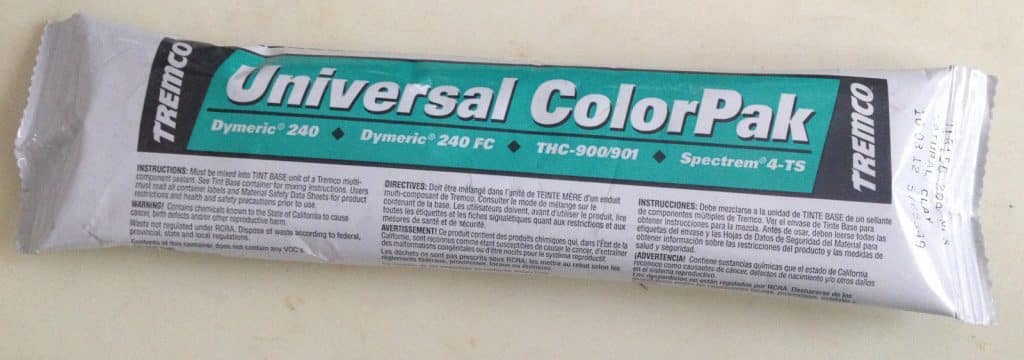Sealants: silicone or polyurethane?
For caulk windows and doors, and avoid air or rainwater infiltration, the use of quality sealant or joint is essential. There are two main alternatives in terms of materials: silicone or polyurethane. But what is the best choice of both? What are their characteristics, qualities and limitations?
Your caulking specialist on the North Shore will answer you… Phone: 514-910-3548
Silicone vs polyurethane
Silicones and polyurethanes, also known as urethane polymers (which are organic), are the most commonly used sealant duo.

Focus on the quality of these two materials.
The qualities of silicone sealants
In addition, silicone sealants are highly resistant to ultraviolet rays and can be easily cleaned.
Over time, polyurethanes become damaged, cracked and can even be powdered, allowing impurities and unwanted micro-insects to easily seep into the interstices (ants, spiders and other critters). Meanwhile, silicones retain all their physical properties for several years.
The qualities of polyurethane sealants
Today, there are high-performance polyurethane sealants available in several colors, including ultra white (exclusive to NP1 from Sonneborn). Like Tremco’s Dymeric 240, they are high-quality polyurethanes whose colours and physical properties last for a long time.
What to know
Implementation of seals
As far as the installation of the joints is concerned, the application of silicones is easier since it can be done at extreme temperatures (up to -25°C or even beyond). Then, the ripening is faster; only half an hour for silicone compared to several days for organic sealants.
However, it is advisable to seek advice from a caulking expert as the choice of the type of sealant depends on many factors:
- Support material
- Outdoor exposure (sun, rain, wind…)
- Type of façade…
Silicone or polyurethane depending on the surfaces to be treated
To do this, it is advisable to contact a caulking expert who knows the products and their applications perfectly.
Why do the joints spoil?
It’s a normal wear and tear that needs to be monitored. The problem is that their deterioration is not always easily visible because the mastics are applied to the join of doors and windows.
It is therefore necessary to have the expert eye of the caulker to identify malfunctions and porosity at the level of the joints. This inspection work should be done preferably in the fall and spring.
On the other hand, it is not long to repair or redo the joints because a bad sealing causes several inconveniences:
- Water infiltrations that damage the interior of the rooms and the lining of the house,
- Air infiltrations that create heat loss and increase your heating bill,
- An uncomfortable feeling in the house due to humidity, cold or mouldy joints.
It is therefore imperative to choose the sealant between silicone or polyurethane that will best adapt to the environment of your home.
Achieving a lasting and effective sealing:
The compatibility between the sealant and the surface to which the product must adhere (wood, aluminum, glass, etc.)
The climatic conditions to calculate the elasticity rate of the sealant. There are sealants that are guaranteed to be flexible at temperatures down to -40C; perfect for Quebec temperatures.
And then other criteria such as ease of application, drying time, colour, resistance to ultraviolet rays, the possibility of painting it…
These sealants and caulking sealants are also used in plumbing, tiling and many other construction work such as masonry or other interventions in the house.

Read:
- Why We Prefer Adfast Sealants
The most frequently asked questions about polyurethane silicone
What is the recommended sealant for bathrooms?
When it comes to choosing the ideal sealant for bathrooms, silicone sealant stands out as the preferred choice. Thanks to its remarkable flexibility and water resistance, silicone sealant is ideally suited for the humid environment of bathrooms. It can maintain an effective seal around tile joints, bathtubs, and sinks, preventing leaks and water infiltration. Its ability to withstand humidity conditions makes it a trusted ally in preventing potential water damage. Whether you’re looking to seal your shower joints or protect surfaces from splashes, silicone sealant provides reliable adhesion and long-lasting protection to keep your bathrooms spotless and watertight.
In addition, the silicone sealant provides exceptional flexibility that allows it to adapt to the natural movements of materials, such as the expansions and contractions that occur in humid environments. This means that even if the surfaces move slightly due to changes in temperature and humidity, the silicone sealant stays in place, preserving its effectiveness. Ultimately, to achieve optimal results in sealing your bathrooms, choosing silicone sealant is a wise decision that will allow you to enjoy reliable protection and lasting peace of mind.
Can polyurethane silicone be used outdoors?
One of the great advantages of polyurethane is its ability to withstand bad weather and climatic variations. It can withstand extreme temperatures, humidity, rain, and atmospheric pressure variations without compromising its effectiveness. This feature makes it an ideal choice for sealing exterior joints such as those around windows and doors, where a strong seal is essential to prevent water infiltration. Whether you’re working on construction, renovation, or DIY projects, polyurethane can be used with confidence outdoors to ensure long-lasting protection and effective waterproofing.
Which of the two sealants usually lasts longer?
Although silicone offers excellent flexibility and grip, its durability may be slightly lower than that of polyurethane. Especially in outdoor environments or under extreme climatic conditions, polyurethane has demonstrated its ability to withstand the effects of time more effectively. If you’re looking for a sealant that can provide long-term protection and withstand the elements, polyurethane is likely to better meet your needs for durability and ongoing performance.
Can I paint polyurethane silicone sealant?
If your project requires further painting and you want to avoid the potential problems with painting silicone, it may be a good idea to consider using polyurethane instead. Unlike silicone, polyurethane can be painted without major problems. Its more porous surface provides better adhesion for paint, allowing you to customize the sealant’s appearance while maintaining its protective effectiveness. If painting is an essential aspect of your project, polyurethane offers a more user-friendly solution to ensure an aesthetically pleasing result without compromising the quality of the sealant.
What sealant is suitable for concrete joints?
Concrete joints can experience significant stress due to the natural movement of the material, heat, cold, and other environmental factors. That’s why it’s essential to choose a sealant that can withstand these demanding conditions. Polyurethane excels in this aspect because of its flexibility and durability. If you are looking for a sealant that can meet the specific needs of concrete joints while maintaining effective long-term protection, polyurethane is the optimal choice to ensure long-lasting and reliable results.
Are both types of sealants UV resistant?
Silicone, while it also offers some UV resistance, can deteriorate faster under continuous exposure to sunlight. Therefore, if your project involves direct and prolonged exposure to outdoor conditions and UV rays, polyurethane may be a wiser choice. It is important to consider the environment in which the sealant will be used and to choose the type of sealant that can best withstand the external elements and the effects of the sun, in order to ensure long-lasting and reliable protection.



